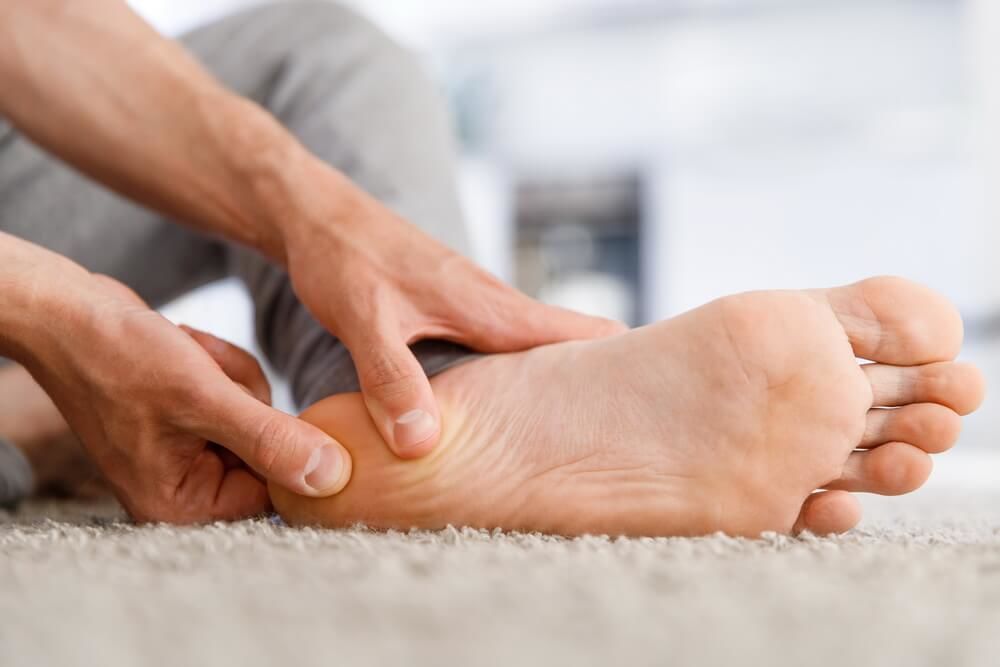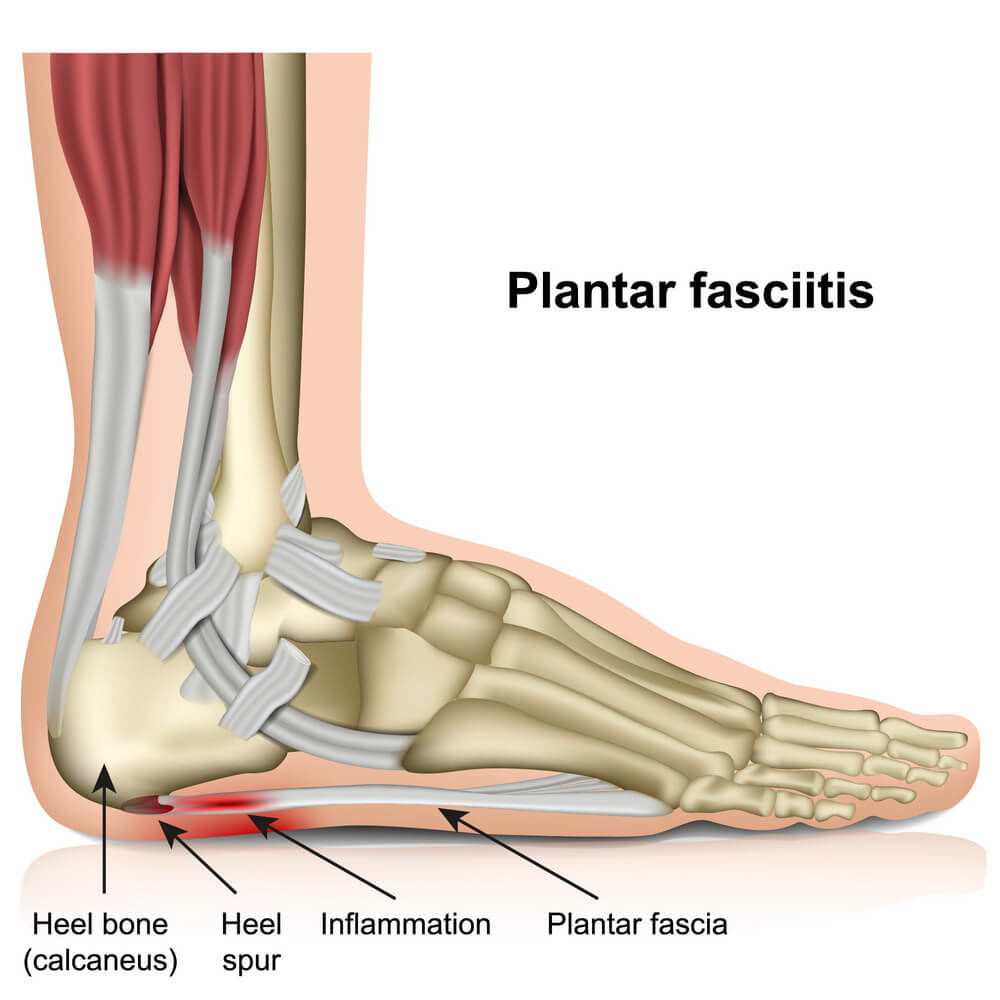Plantar FasciitisPlantar Fasciitis / Plantar Heel PainHeel pain, especially stabbing pain first thing in the morning, is most often associated with the Plantar Fascia. As the condition progresses, there may be pain at the end of the day as you get off your feet or up into the back of the leg. Other names for this common problem are Plantar Heel Pain, Heel Spur Syndrome, fat pad bruising or Heel Spurs. It is important to be aware that there are other causes of heel pain which are not related to the plantar fascia and that need to be treated differently. These can include: nerve entrapment, stress fractures, tendonitis and arthritis. Hence the correct diagnosis is very important. The plantar fascia is a dense, fibrous ligament like structure which attaches to the base of the heel, that then fans out towards the ball of the foot and attaches to the base of the toes. The plantar fascia stretches very subtly and acts as a shock absorber for the foot and leg. As the foot strikes the ground when walking the foot flattens out slightly which lengthens the foot and loads the plantar fascia. As the heel lifts off the ground then tension eases off slightly. This repetitive loading and unloading can result in inflammation of the tissues and sometimes tears within the plantar fascia. In addition, it may in time lead to a spur forming on the heel bone. |  |
 | There are many factors which might result in the plantar fascia failing to cope with the repetitive loading. These can include training errors, prolonged standing, incorrect footwear, poor foot function (low arches), poor calf flexibility and arthritis to name a few. The good news is we have lots of potential treatment options. The key is to have the correct diagnosis first and then implement the right treatment at the right time. Treatment options include
|